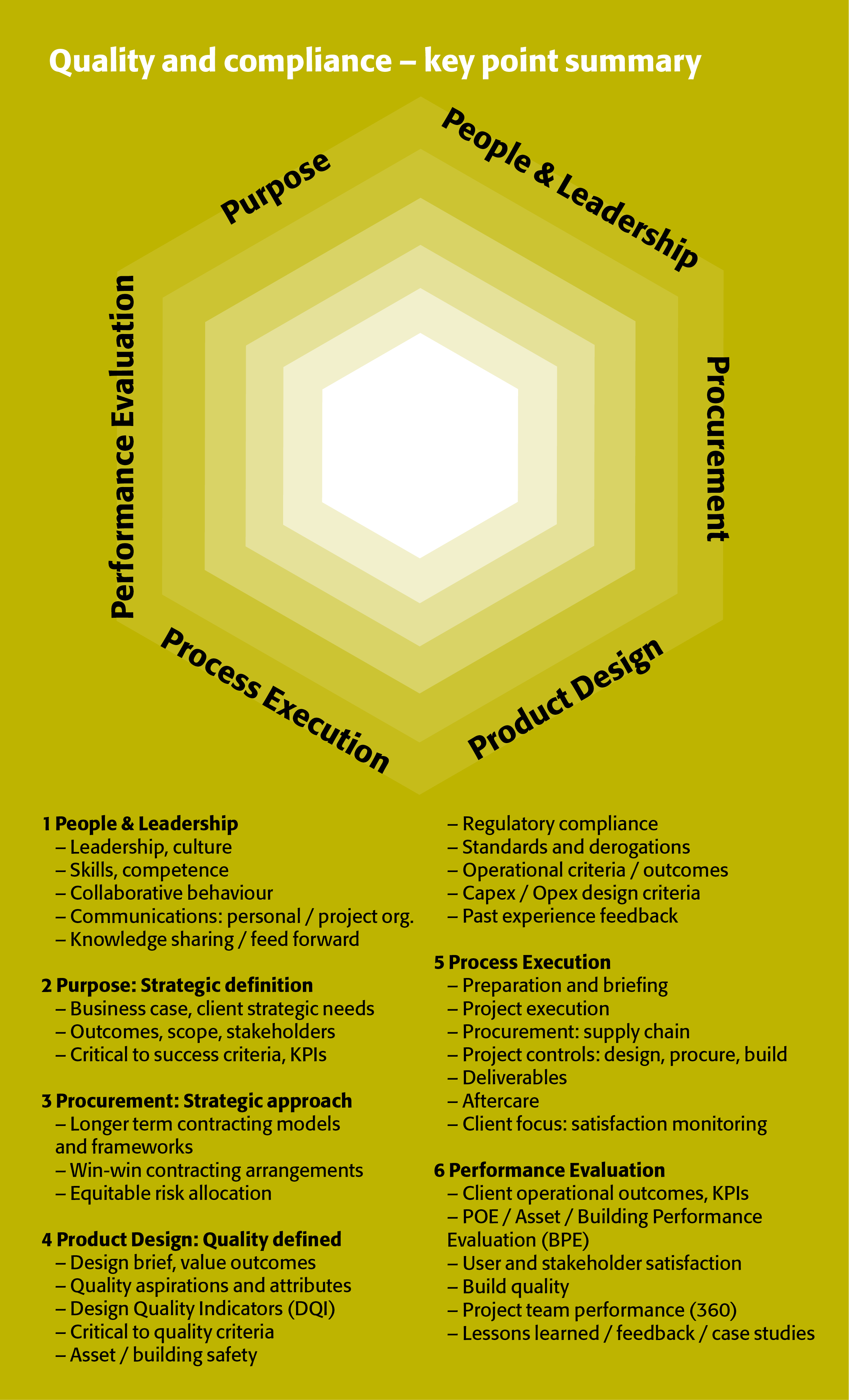
Guide menu
Guide home page
Introduction
Guide overview and key terms
Enlightened client questionnaire
What are the six Ps?
How we built the six Ps (this page)
Knowledge hub
Minor works clients
External resources
Acknowledgements and endorsements
About this page
How we built the six Ps using existing quality and compliance resources and frameworks.
The Aim of this Guide
The aim of the Enlightened Client’s Journey to Project Quality and Compliance was to identify best practice in achieving client’s quality requirements, reliably, across the project lifecycle. Best practice would need to recognise and address the challenge of working in a complex, highly fragmented sector to achieve bespoke, quality buildings and outcomes. Practices, strategies and processes that support a collaborative project culture would be essential.
Quality and Compliance Related Toolkits and Frameworks
Before developing the guide and its associated resources, several existing quality related frameworks and toolkits were reviewed. If possible, it was intended to use or adapt an existing framework. A possible early contender was the Building In Quality Tracker developed by the RIBA, RICS and CIOB – builder however, feedback following its pilot projects indicated very limited industry response. A wide-ranging review of selected UK and international frameworks and toolkits was then undertaken to identify whether common quality related principles and themes would emerge.
The selected frameworks were mostly construction sector specific and aimed to consider quality in both service and product from a variety of perspectives.
- Product quality was informed with reference to established frameworks such as the Design Quality Indicators , BREEAM and the recently developed Value Toolkit;
- Soft Landings addressed the project lifecycle stages whilst focussed on operational outcomes and building performance. A collaborative approach drew upon the principles of the Integrated Collaborative Working Toolkit and overall Quality Management principles from the non-sector specific international ISO standards and underlying Total Quality concepts.
- Research from the Construction Industry Institute in the USA provided the Project Definition Rating Index and a recently developed framework from Building a Safer Future based on the post-Grenfell Hackitt Report recommendations, focussed on the importance of leadership and culture.
- The RIBA Plan of Work provided a well-established framework and many quality related activities, and the Government’s Construction Playbook highlighted the importance of procurement strategy in setting the essential behaviours and culture to achieve quality, safe buildings.
Whilst the quality related frameworks selected and the reviews undertaken were not exhaustive, they did suggest some common themes to structure the guide. Following discussion and debate, drawing on the experience of the working group, the six-part structure emerged that appeared to usefully reflect the aims for the guide. They just happened to all start with the letter P!

![]()
Quality and Compliance Related Toolkits and Frameworks
The purpose of this document is to identify Project Quality and Compliance best practice and resource guidance for clients operating in various sectors of the built environment.
Quality and Compliance
The six Ps framework was subsequently further developed with sub-headings and examples of best practice from members of the working group and through pilot interviews with client representatives.
Further development of the guide will include a CESW Quality & Compliance theme group webpage with sign-posting to general and sector specific resources.
![]()
Best Practice & Resources Guidance for Clients Using the six Ps
The purpose of this ducument is to provide a total project quality framework across the project lifecycle and a framework of best practice examples and resource guidance generally and for clients operating in various sectors of the built environment.
